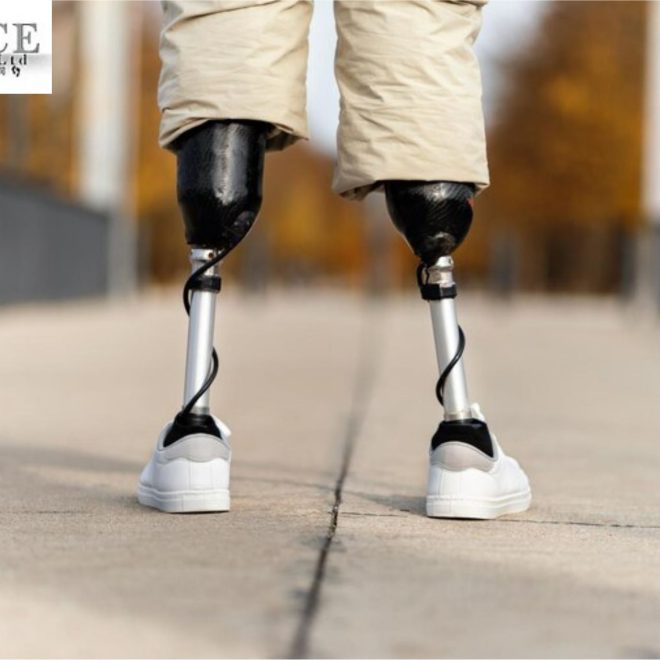In the realm of medical technology, prosthetics have always been a beacon of hope, bridging the gap between disability and normalcy. Especially, artificial legs have seen a remarkable journey from rudimentary replacements to sophisticated devices mimicking natural limbs. This evolution mirrors our relentless quest for better, more life-like solutions. Today, we stand at the cusp of an era where artificial legs are not just substitutes but extensions of the human body, equipped with advanced technology.
The Growing Need for Advanced Prosthetics
Losing a limb is a very unfortunate accident in life, it affects one’s mobility and daily activities. Prosthetics, particularly artificial legs, play a crucial role in bringing back a sense of normalcy. Recent statistics suggest that millions worldwide could benefit from these advanced prosthetics. This growing need has propelled technological advancements, making prosthetics more than just mobility aids. They are now tools for empowerment, enabling users to reclaim their lifestyles.
Technological Innovations
The latest prosthetic legs are a testament to human ingenuity. These marvels blend design and technology to offer unmatched functionality. Here’s a look at some key innovations:
- Materials: Cutting-edge artificial leg use materials like carbon fibre and durable polymers. These materials ensure the prosthetics are not only strong but also incredibly lightweight, allowing for easier movement.
- Design and Functionality: Each prosthetic is designed keeping in mind the unique needs of its user. This personalisation is crucial in ensuring comfort and efficiency.
Robotics and Artificial Intelligence in Prosthetics
Perhaps the most ground-breaking advancement in this field is the integration of robotics and AI. This fusion has transformed prosthetics from passive devices to intelligent limbs capable of responding to their environment.
- How Robotics Enhance Prosthetics: Robotic technology in artificial legs enables movements that closely mimic natural walking. This advancement is crucial in providing a more intuitive and comfortable experience for the user.
- AI’s Role: AI plays a pivotal role in making prosthetics smarter. It helps these devices learn and adapt to the user’s walking style and environment. For instance, an AI-powered prosthetic leg can adjust its movement on different terrains, making walking safer and more efficient.
Sensory Feedback and Control Systems in Prosthetics
Advancements in Cutting-edge artificial legs now encompass sensory feedback and sophisticated control systems, marking a significant leap in prosthetic technology. This innovation is pivotal for creating a more natural and intuitive walking experience.
- Sensory Feedback: Modern prosthetics are now able to provide users with sensory feedback. This means they can feel touch or pressure, significantly enhancing their interaction with the environment. Such feedback aids in manoeuvring over diverse terrains and reduces the risk of injuries.
- Control Systems: The control systems in these prosthetics are no less impressive. They are designed to interpret the user’s muscle movements and intentions, enabling smoother and more intuitive limb movements. This system allows for a range of motions, making everyday activities easier.
Customisation and Personalisation
Personalisation plays a crucial role in the effectiveness of Cutting-edge artificial legs.
- Custom Fitting: Each prosthetic is tailored to fit the user’s unique body measurements. This custom fitting is vital for comfort and efficiency, ensuring that the artificial leg functions as a natural extension of the body.
- 3D Printing: A key player in customisation is 3D printing technology. It allows for precise and personalised prosthetic construction, catering to individual needs and specifications.
Challenges and Future Directions
While these advancements are transformative, they also bring forth challenges and exciting future possibilities.
- Current Challenges: The primary challenges include the cost of these advanced prosthetics and their accessibility. Additionally, users often require training to effectively use these high-tech limbs, which can be a barrier for some.
- Future Developments: The future holds immense promise. Ongoing research aims to lower the cost and increase the accessibility of these technologies. Additionally, improving the use and functioning of prosthetic limbs is a priority.
The Intersection of Medicine and Technology
The collaboration between medical experts and technologists has been pivotal in these advancements. This synergy is creating a new era in prosthetics, where medical knowledge and cutting-edge technology converge.
- Collaboration is Key: The progress in prosthetic technology is a result of the collaborative efforts between medical professionals and tech experts. This partnership is essential to ensure that the prosthetics not only incorporate advanced technology but also meet the medical and practical needs of users.
- Looking Ahead: There’s great potential in further integrating prosthetics with the human nervous system. Such advancements could lead to even more natural and intuitive limb control, opening up new possibilities for individuals with limb loss.
Conclusion
The journey of artificial legs from basic mobility aids to sophisticated, intuitive devices showcases the incredible strides we have made in marrying technology with human needs. This path demonstrates not just our technological capability but also our dedication to using innovation to improve lives. As we move forward, prosthetic arm promise to improve users’ quality of life in addition to offering more functionality.






